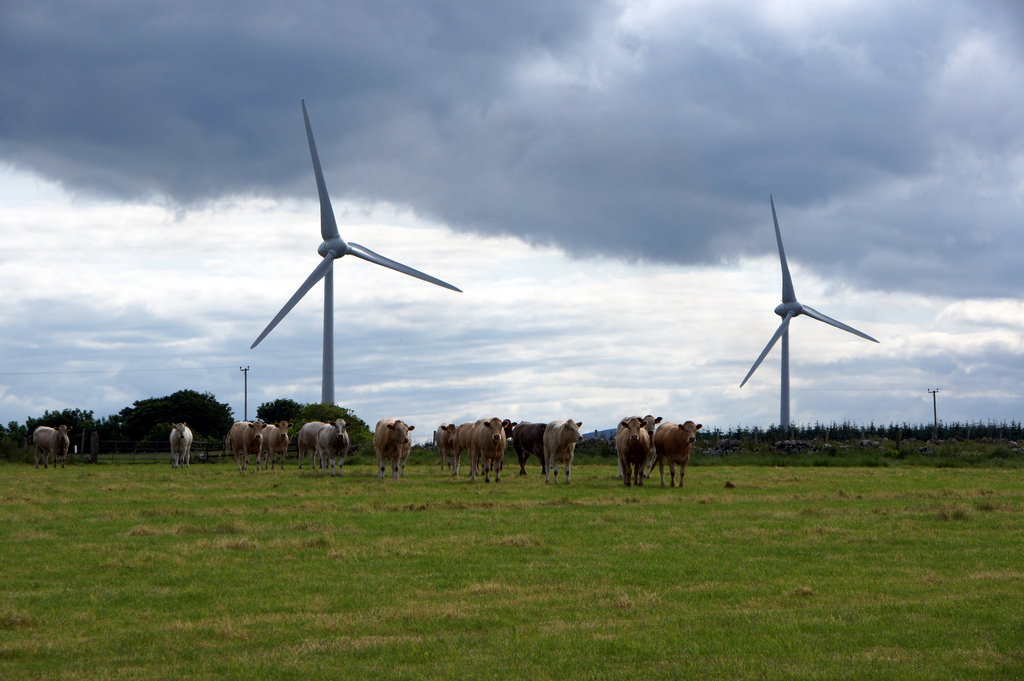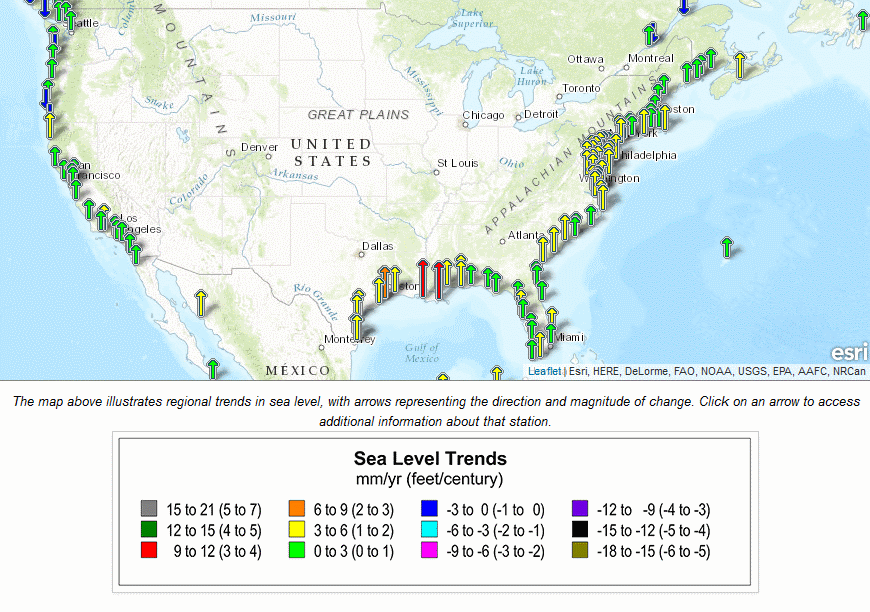Global Warming and Wisconsin’s Economy
Will state’s leaders heed the example of Warren Buffett on alternative energy?

Wind Turbines. Photo by Martin Abbeglen
When the Environmental Protection Agency (EPA) issued its Clean Power Plan (CPP), 26 states joined West Virginia’s lawsuit against the plan. Wisconsin was one of the plaintiffs, despite a poll indicating that the plan enjoyed the support of two thirds of Wisconsinites. Another 18 states intervened in support of the plan.
Several of the states opposing the CPP are, like West Virginia, producers of coal and other fossil fuels. However a look at the map shows that the major factor determining the state’s position is partisan politics. With few exceptions, Republican states joined the lawsuit; Democratic states supported the EPA’s plan.
Another factor behind Iowa’s heresy is suggested by Warren Buffett’s most recent annual letter to Berkshire Hathaway shareholders. Berkshire Hathaway Energy (BHE) owns a number of electric utilities including the largest utility in Iowa. According to Buffet, BHE “has invested $16 billion in renewables and now owns 7% of the country’s wind generation and 6% of its solar generation. Indeed, the 4,423 megawatts of wind generation owned and operated by our regulated utilities is six times the generation of the runner-up utility.” The letter goes on to note:
In wind generation, no state comes close to Iowa, where last year megawatt-hours we generated from wind equaled 47% of all megawatt-hours sold to our retail customers.
Low prices are a powerful way to keep these constituencies happy. In Iowa, BHE’s average retail rate is 6.8¢ per KWH. Alliant, the other major electric utility in the state, averages 9.5¢. Here are the comparable industry figures for adjacent states: Nebraska 9.0¢, Missouri 9.3¢, Illinois 9.3¢, Minnesota 9.7¢. The national average is 10.4¢.
Although Buffett didn’t mention Wisconsin in his letter, the list he was using shows the average Wisconsin price at 10.3 cents per kilowatt hour.
At the shareholders meeting itself, Buffet expanded on the comments in his letter. According to him, low-cost wind energy has led several companies to locate their server farms in Iowa.
Buffett’s bullish attitude towards wind and solar energy stands in sharp contrast to the dominant view from Wisconsin’s business community, at least as expressed by Wisconsin Manufacturers and Commerce (WMC). When then-Governor Jim Doyle proposed a plan for Wisconsin to help counteract global warming, the WMC claimed it would cost more than 43,000 jobs in Wisconsin. To a large extent the argument that responding to climate change would be devastating to the Wisconsin economy has since been taken over by other right-wing organizations, such as the MacIver Institute and the Wisconsin Policy Research Institute.
Compared to Iowa, Wisconsin has lagged in wind power. According to the American Wind Energy Association, Wisconsin generates 2.5 percent of electricity from wind. This compares to Iowa’s 31.5 percent.
Meanwhile it becomes less and less easy to claim that human-caused climate change is a hoax. In many coastal areas there is increased flooding as glaciers and polar ice caps melt and seawater expands as it becomes warmer. Surprisingly, the rise in sea level varies from place to place because of winds and currents. Sea level is expected to fall in areas near the poles because melting ice puts less weight on the land.
The graph below, from the National Oceanic and Atmospheric Administration, shows the projected trends along the American coast. Green arrows show a rise of 0 to 1 feet per century, yellow from 1 to 2 feet, orange from 2 to 3, and red from 3 to 4 feet. (Click on the link for the full map.)
The higher sea levels are leading to an increasing instance of “sunny-day flooding” in areas along the coasts, flooding not associated with hurricanes or other storms, simply due to high tides. Miami Beach, Fort Lauderdale, and the area around Norfolk Virginia are examples of places that are especially vulnerable.
As the next graph shows, carbon dioxide levels have been steadily rising since 1970. CO2 is the major contributor to global warming. These numbers are taken from NOAA.
As a result of increased CO2 and other gases, average temperatures have also risen over this period. 2015, like 2014, was the warmest year on record. According to Accuweather, Milwaukee was 1.3 degrees F above normal in 2015.
1998 was a particularly warm year, as shown on the chart above. It took most of a decade for temperatures to return to the 1998 level. This led to the argument by climate change deniers that temperatures had plateaued. From the statistics viewpoint the plot above looks like the combination of a rising trend line with random variation superimposed upon it. The first can be regarded as a measure of climate change, while the second shows the random variations brought on by weather. While the climate models do a good job of predicting the long-term direction of climate, they are less useful—at least so far—at predicting next year’s weather.
There seems to have been something of an evolution in the arguments that businesses and their agents make against measures to deal with climate change. In the past they often allied with climate change deniers, those who argued that the science was wrong, that the evidence did not support the theory that the climate was changing due to human activity, or that there was a huge conspiracy among scientists and political activists to fraudulently promote the theory of climate change as a way to promote a political and economic agenda.
The increasing evidence that climate change is happening is possibly one reason for the growing reluctance among businesses to be associated with the climate change deniers. Another is that it is increasingly evident that companies that deny the effect of climate change may be opening the door to legal liability; public companies are expected to share with shareholders and those considering buying shares information on the potential risks of the business. Exxon, in particular, is accused of hiding what its own scientists concluded about climate change.
The result is the deniers are increasingly limited to the kooks and crackpots on the edge of the political spectrum. It is very hard to find anything recent from the Wisconsin business community that discusses the evidence for and against the predictions of climate science. Instead, costs become the major argument, forgetting that one person’s cost is someone else’s business and job opportunity.
Climate change brings both risks and opportunities for those who, like Buffet, recognize the dangers and see that they can prosper by helping develop solutions. The problem for Wisconsin is that the dominant players in business and government both ignore the opportunities presented.
Data Wonk
-
Life Expectancy in Wisconsin vs. Other States
 Dec 10th, 2025 by Bruce Thompson
Dec 10th, 2025 by Bruce Thompson
-
How Republicans Opened the Door To Redistricting
 Nov 26th, 2025 by Bruce Thompson
Nov 26th, 2025 by Bruce Thompson
-
The Connection Between Life Expectancy, Poverty and Partisanship
 Nov 21st, 2025 by Bruce Thompson
Nov 21st, 2025 by Bruce Thompson

























Where does the environment rank on the list of Walker and GOP legislators list of concerns? 127th?
“the average Wisconsin price at 10.3 cents per kilowatt”
This is only the charge per kilowatt, this price would be considerably higher if the fees the utilities charge! I use very little power from the grid thanks to a 4kW array but recent increases in fees by WE Energies means I still owe them almost $16 and change each month.
“the average Wisconsin price at 10.3 cents per kilowatt”
Should be corrected to:
“the average Wisconsin price at 10.3 cents per kilowatt-hour”
A kilowatt is a unit of power and a kilowatt-hour is a unit of energy. Electricity is priced per unit of energy.
@Damien Sommer Thanks. Fixed
Here are the problems in Wisconsin: UW needs to be reorganized, need roads, K12 schools need new leaders, crime in Milwaukee run by left is spiraling worse than Chicago,
Milwaukee has big lead problem,heroin, human tfficking, prisons. Climate changes all the time and warmer is better. why on ear would we seen billions that chase out our businesses and jobs. Great Lakes were supposed to evaporate under Global warming and it is up 1 foot.